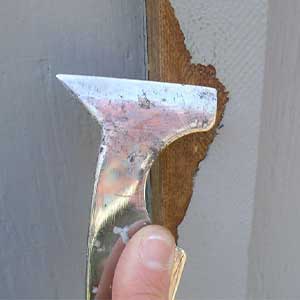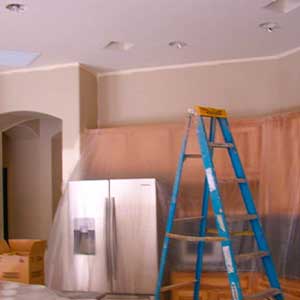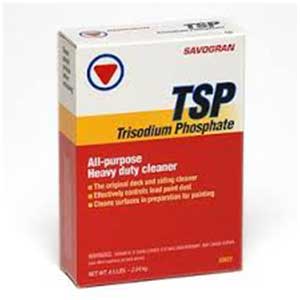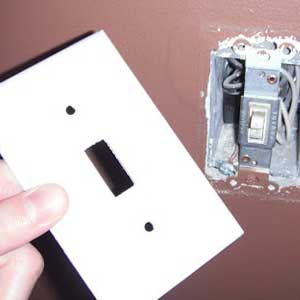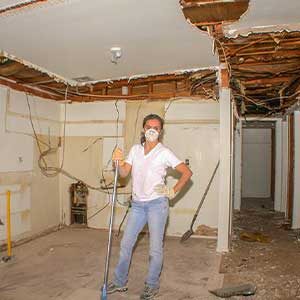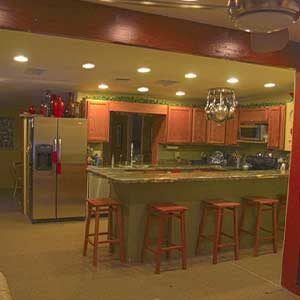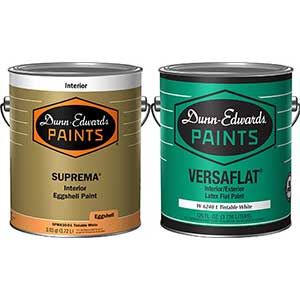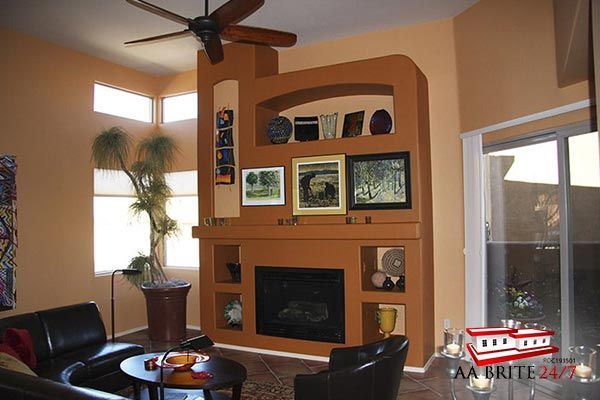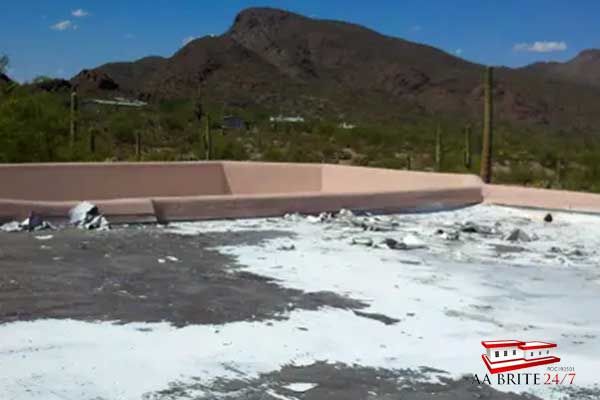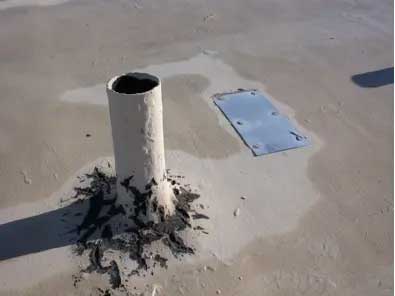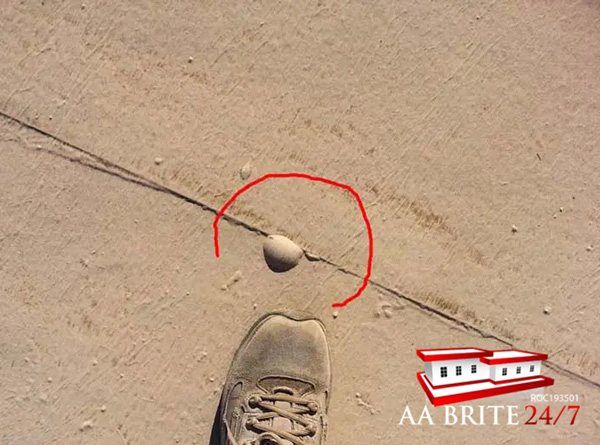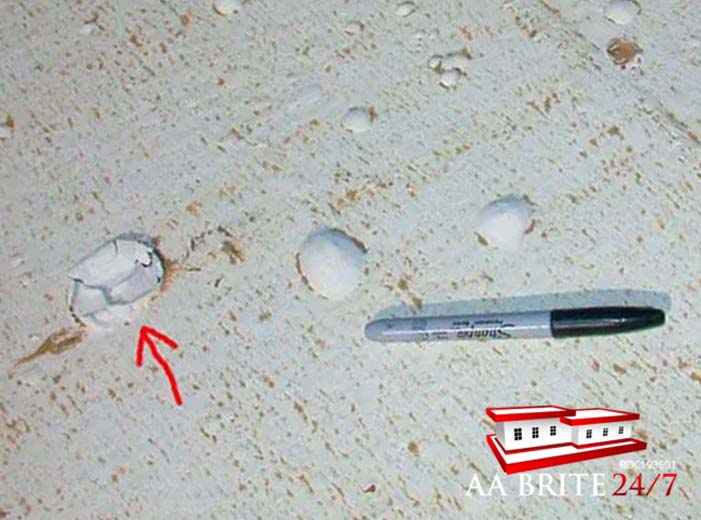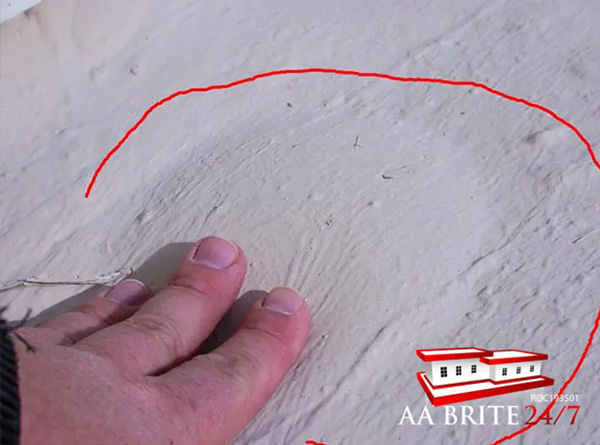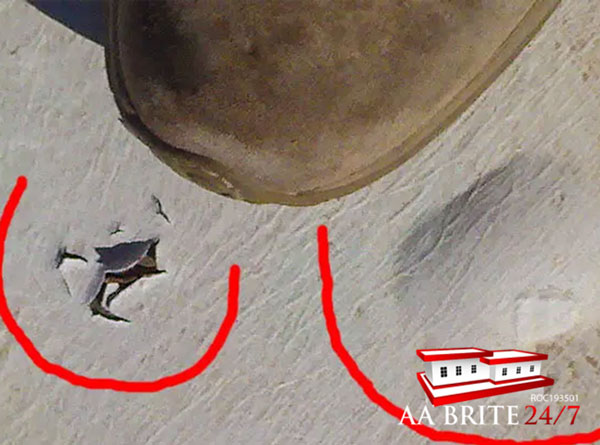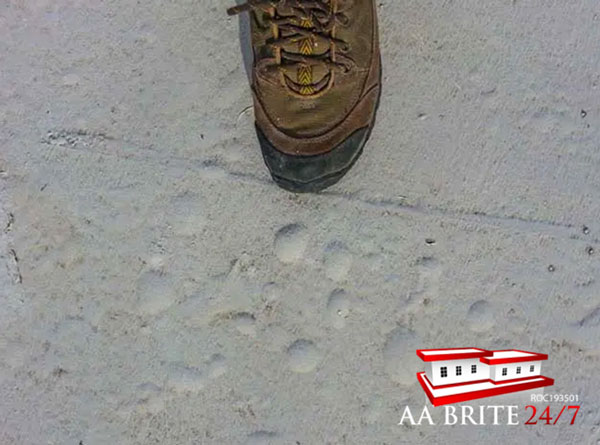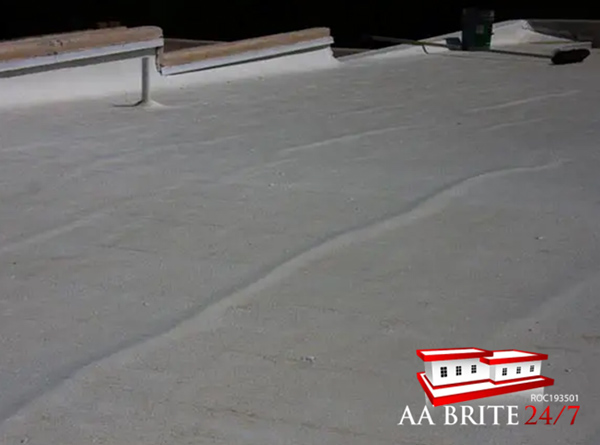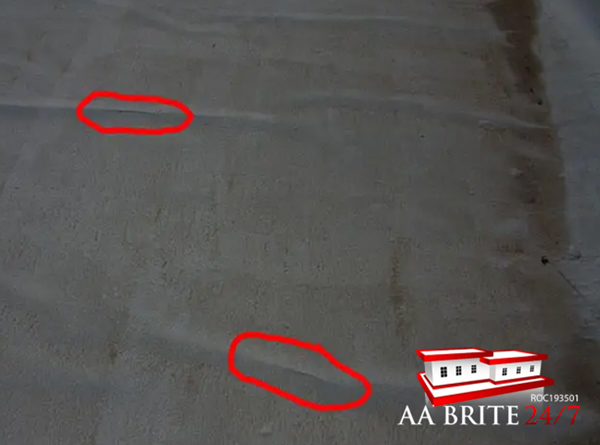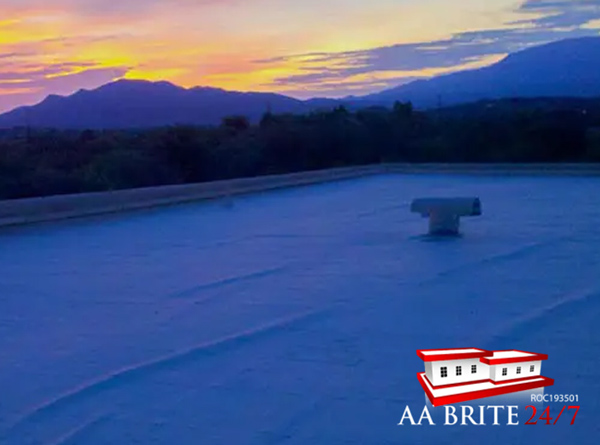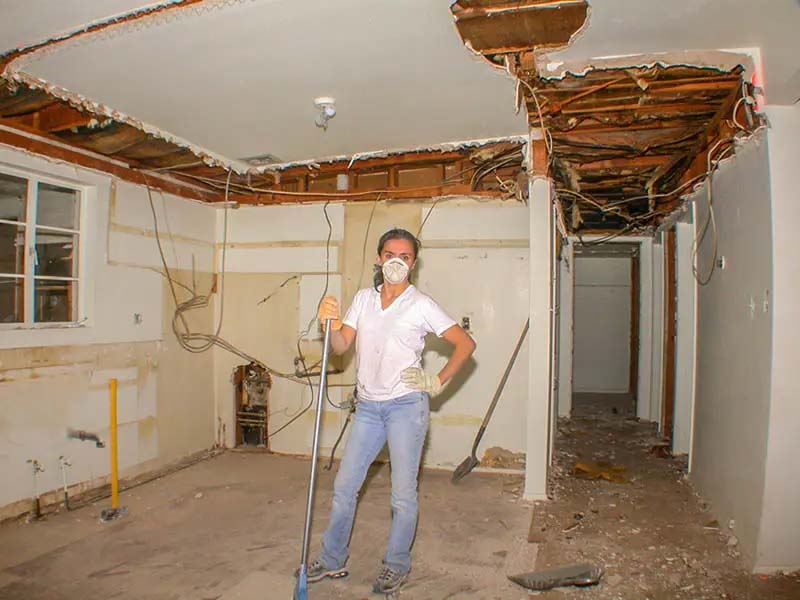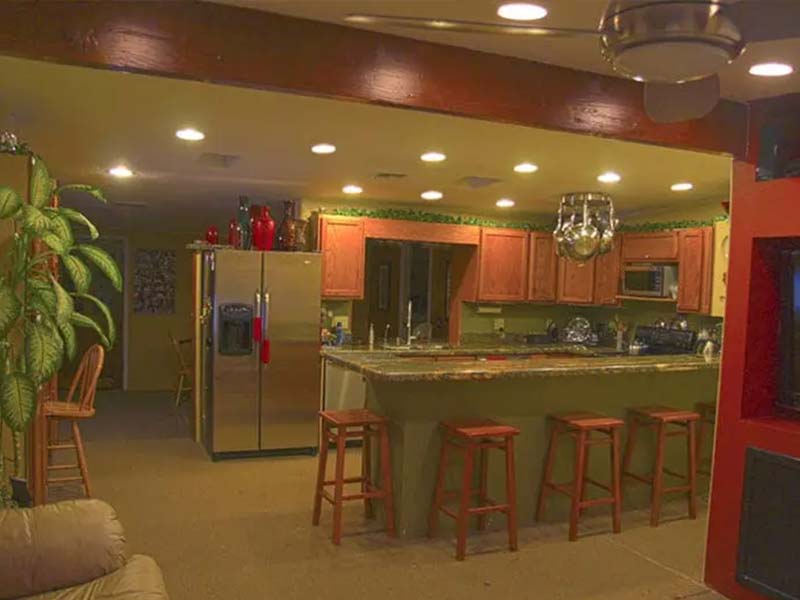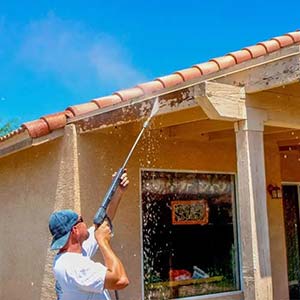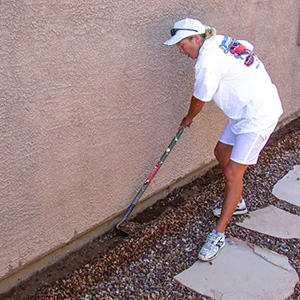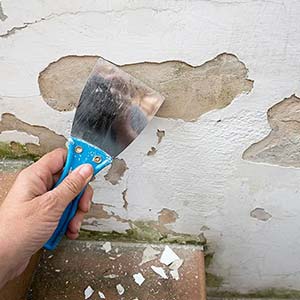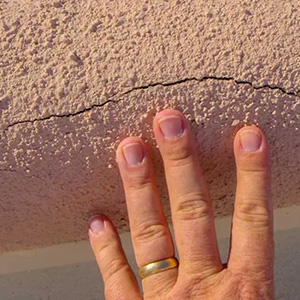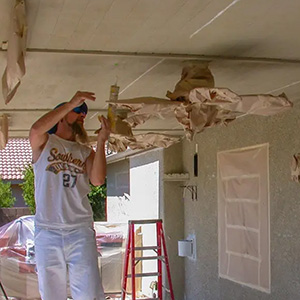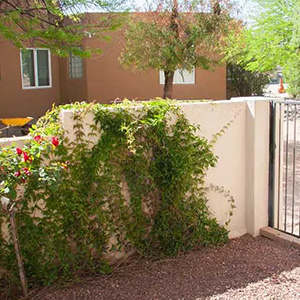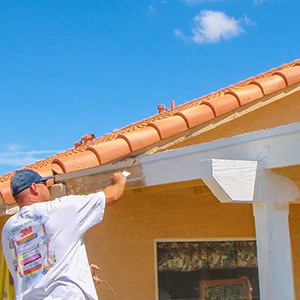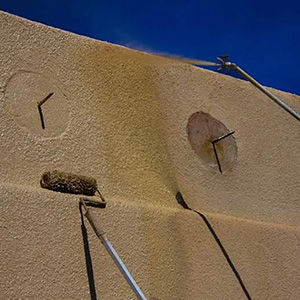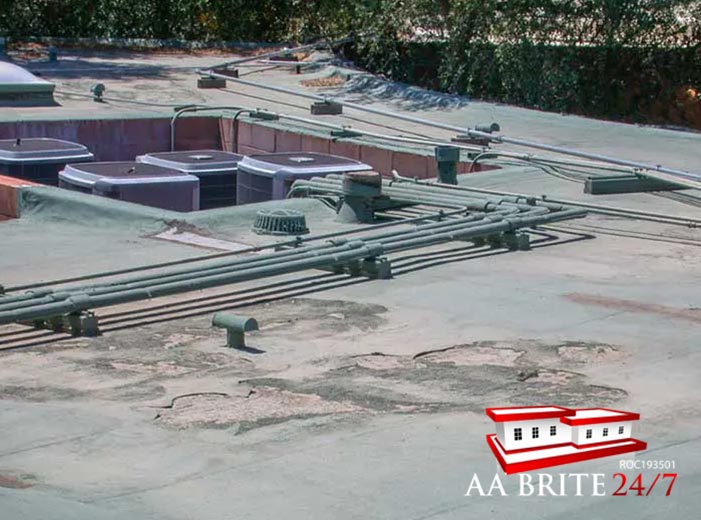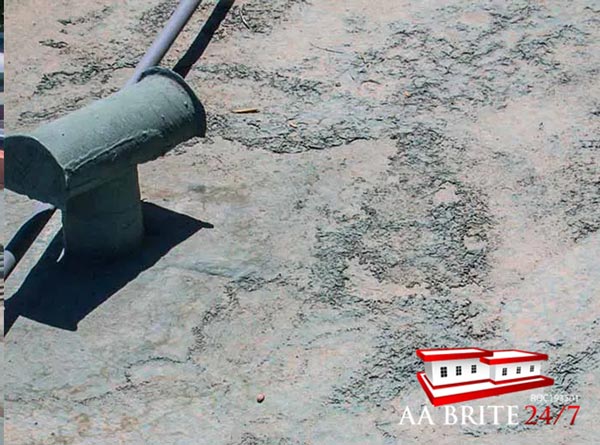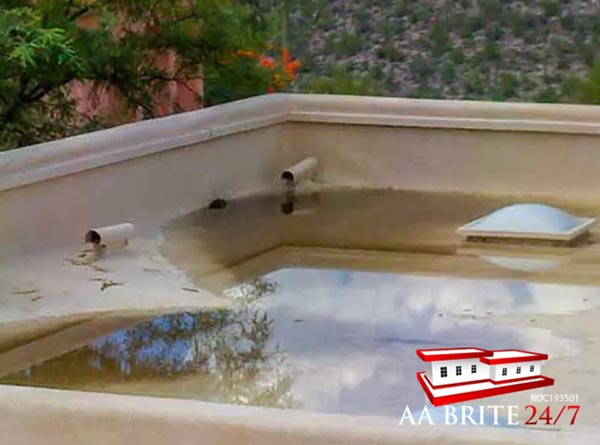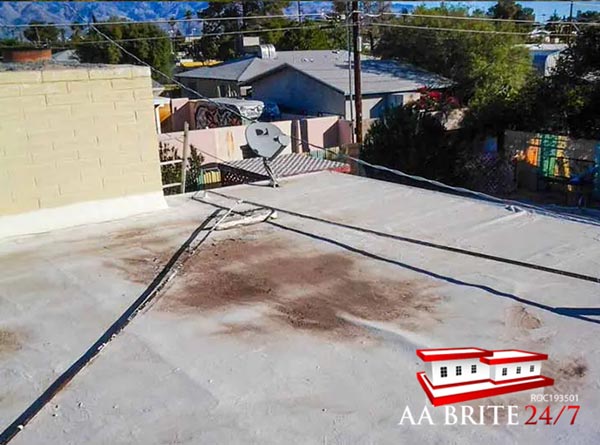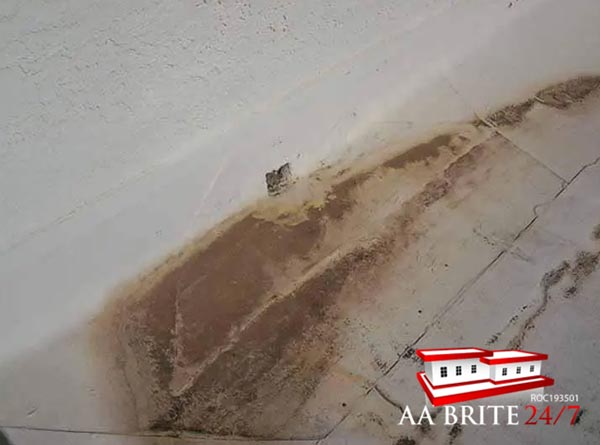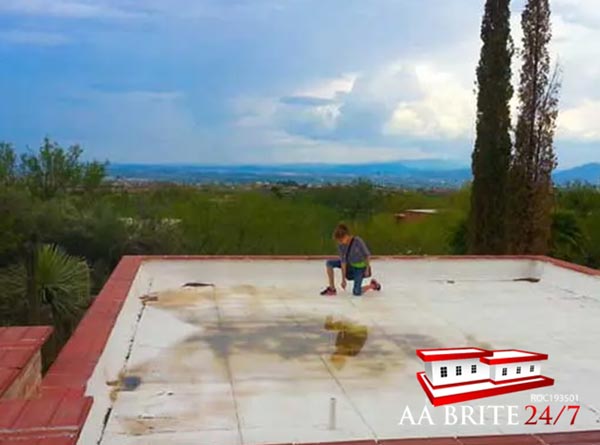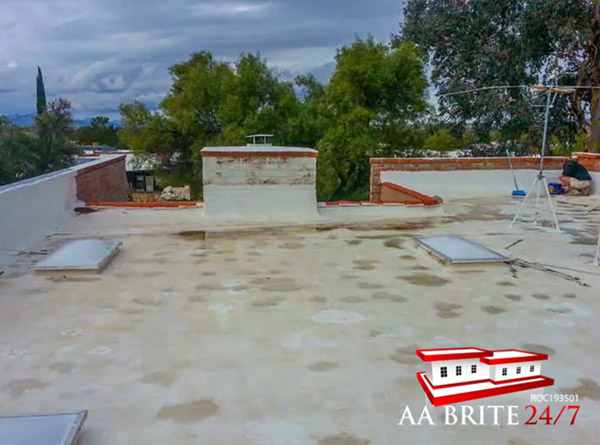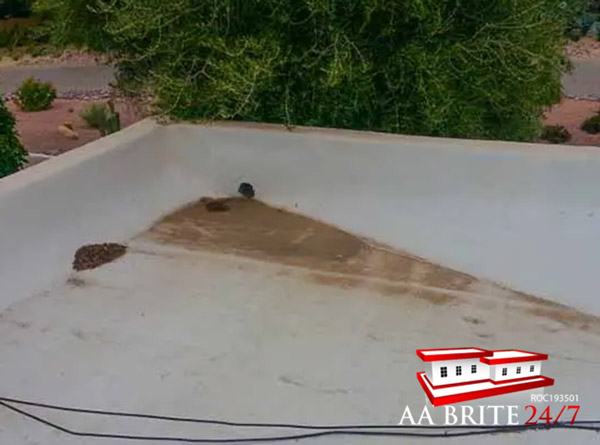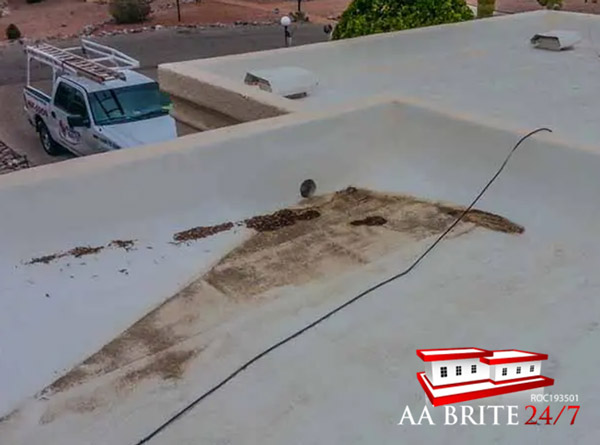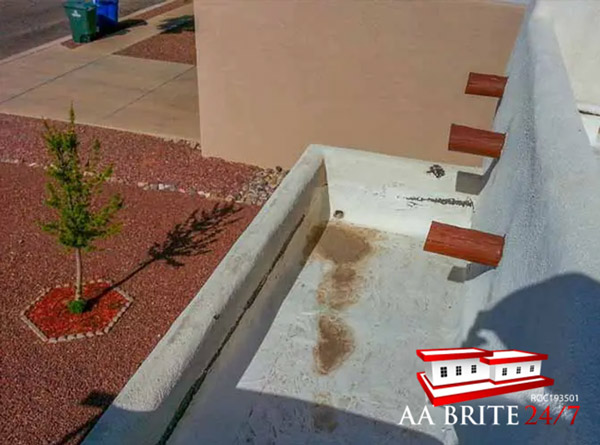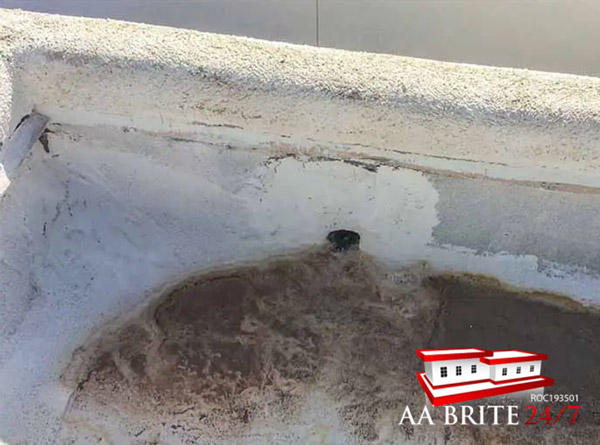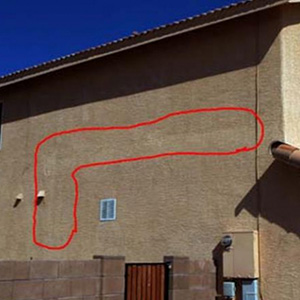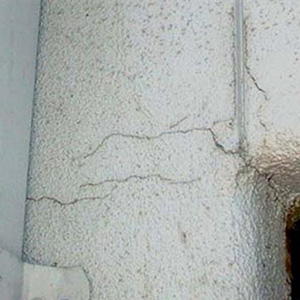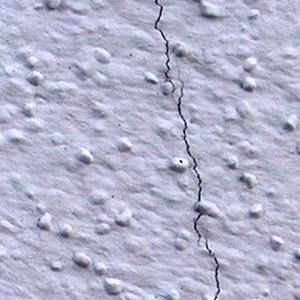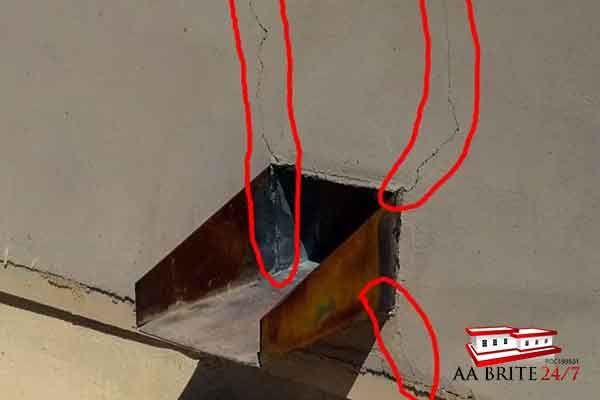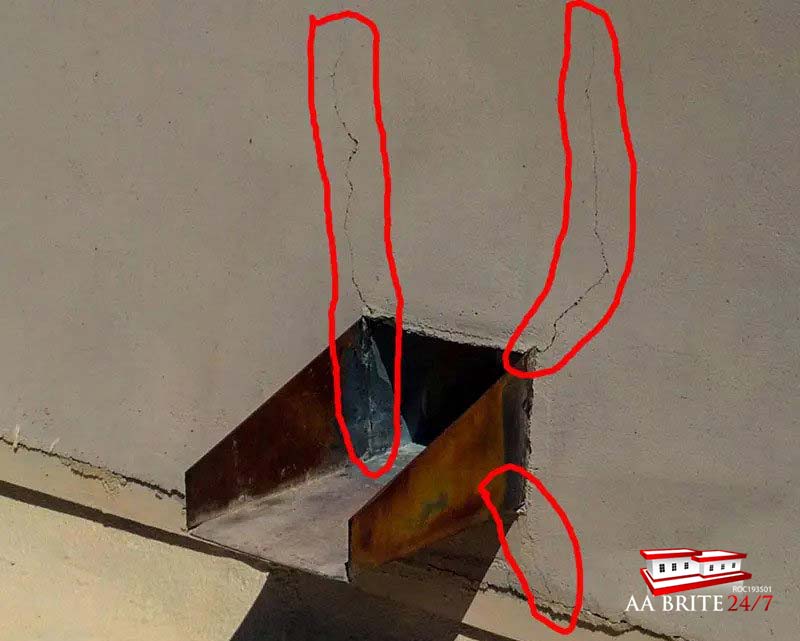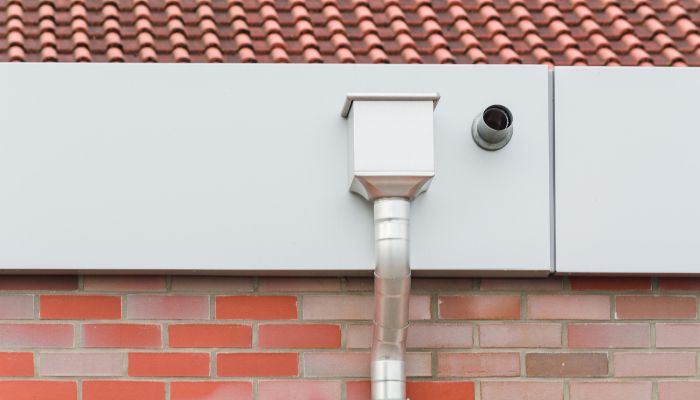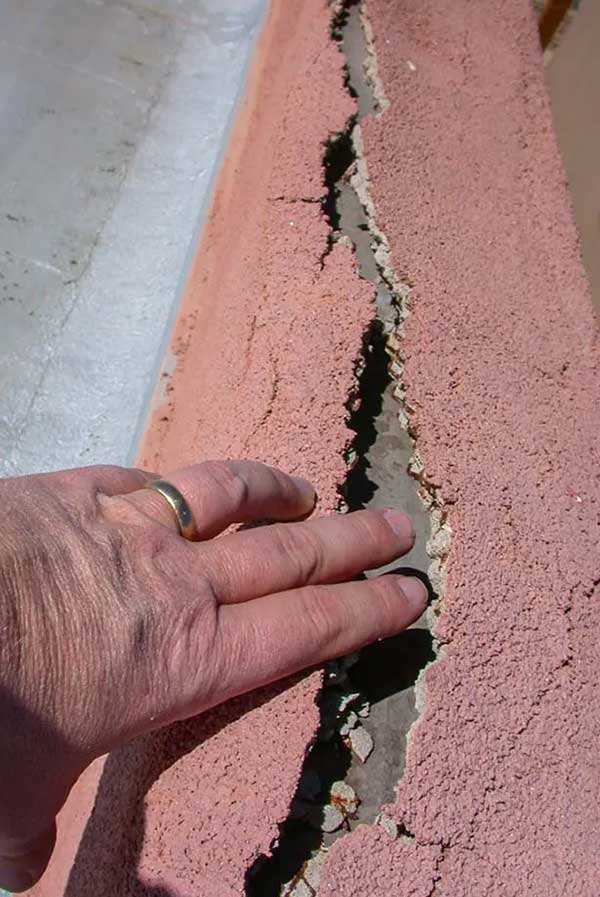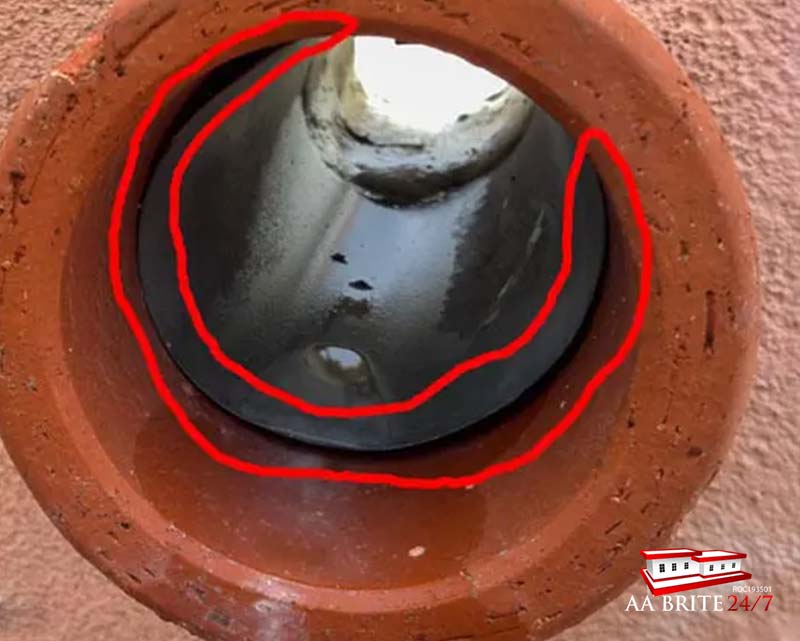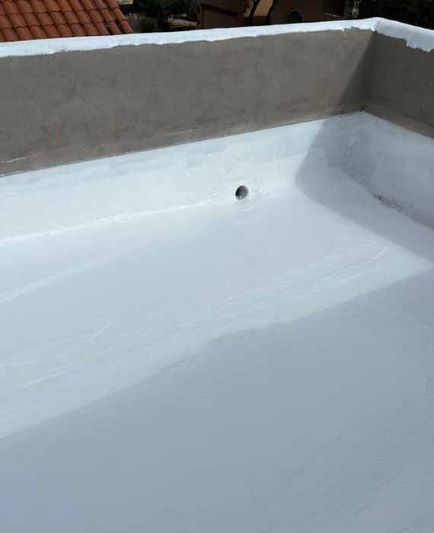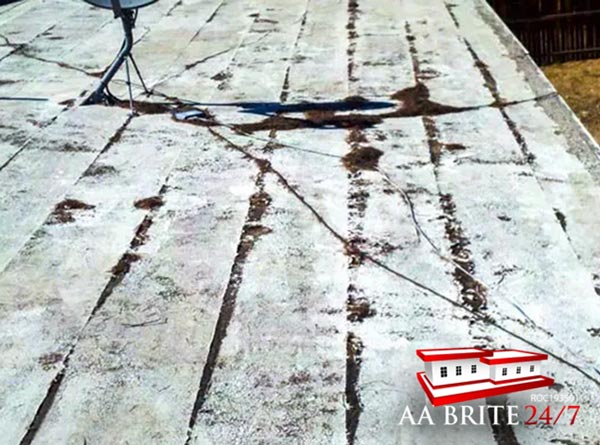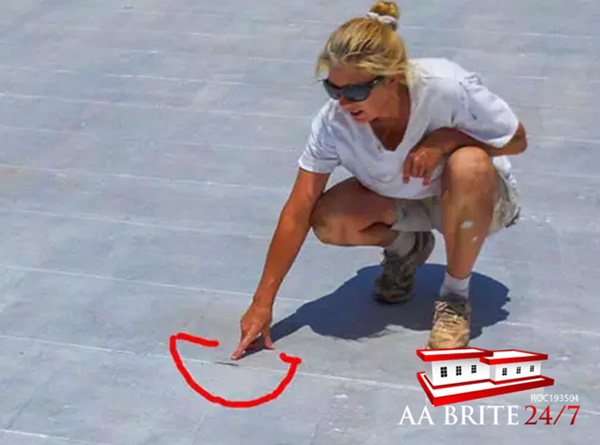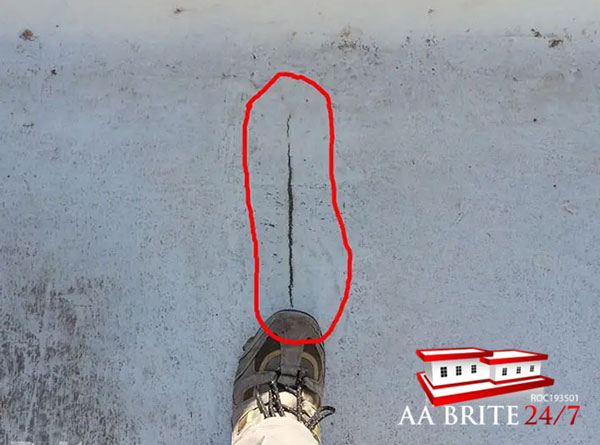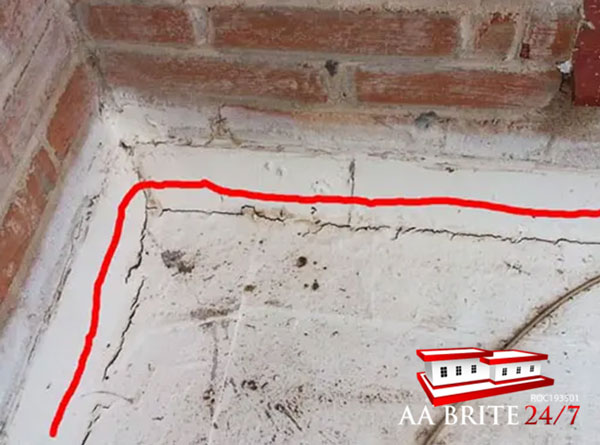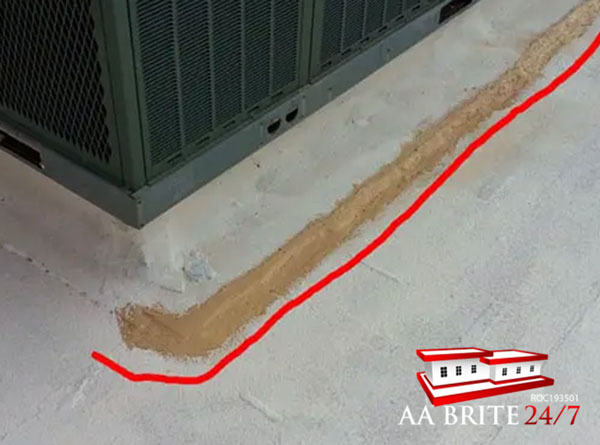What is elastomeric roof coating?
Elastomeric roof coating is a synthetic rubber product that can be applied to residential or commercial roofs for the purpose of waterproofing and extending their service life. Elastomeric roof coatings are usually a white or a light beige color and are applied in liquid form with a roller, brush or sprayer. When dry, the coating acts as a solid membrane which reflects most sunlight and allows rainwater to flow off the roof. It’s likely the third most common roofing system behind tile and shingle.
What else is elastomeric roof coating called?
“Cool Coating” is a generic or slang term for elastomeric roof coating.
Is elastomeric roof coating the same as rubberized roof coating?
Cool Coating is a generic or slang term for elastomeric roof coating. There are other roofing systems using various forms of rubber (such as EPDM sheeting) which are vastly different from elastomeric rubber roofing systems.
What are the benefits of using an elastomeric roofing system?
The three primary benefits to a cool coated / elastomeric roof coating roof system are:
- Much lower summer surface temperatures than other kinds of roofs = lower air conditioner bills.
- Compared to tile and shingle, a coated system is quite a bit easier to work on, and it can be safely walked on when its hot or cold outside.
- Its less expensive to apply than most other roofing systems.
How does elastomeric roof coating / cool coating work?
Most roofs are finalized using some sort of system. Shingle, tile and elastomeric roofs all have several layers to them. An elastomeric roof coating system usually consists of a base layer. The most common base layers are tar or tar paper, rolled asphalt sheeting, or polyester fabric. On top of the base layers several coats of a liquid rubber coating (elastomeric / cool coat) is applied. The entire elastomeric / cool coat system is designed to keep water out while withstanding the sun, rain, wind and some snow. The coating is designed to flex enough to allow for a normal amount of movement of the wood within the ceiling.
Do elastomeric roofs work as advertised?
Yes and no. Advantages to cool coated roofs are ease of maintenance and lower initial installation costs than tile or shingle, and they reflect A LOT of sunlight. The disadvantages include more frequent maintenance, susceptibility to damage if there is ponding water, and a danger on some roofs of the drains becoming plugged from tree debris.
Do local elastomeric roof coating manufacturers have advantages over national box store coatings?
Definitely yes! Local or regional manufacturers can produce coatings that are formulated for the weather in the area. A good coating for a roof in the damp and overcast northwest US is going to be completely different than one for hot, mostly dry, and very sunny Tucson, Oro Valley, or Green Valley Arizona.
What is the best elastomeric roof coating?
One regionally produced, or produced specifically for the climate where you are living. For example a good coating in phoenix would also be good in Las Vegas since they are similar climates. In Tucson our favorite for the past 4 years or so has been Tucson Rubberized 7000. In prior years we used another well known brand produced in the south west, but then the company was sold and the quality went down. Assuming Tucson Rubberized does not change the formula, drastically alter the price, or sell the company, then we will probably be using them for the foreseeable future.
How long will an elastomeric coated roof last?
In most cases usually three to six years for the coating itself and indefinitely on the base layers. There are a tremendous number of variables from roof design, drainage, tree and plant debris, quality of roof coating, if coating was watered down when applied, and how well was any patching done.
Do elastomeric coatings last as long as advertised?
No, the manufacturers of elastomeric roof coatings use ASTM standards and testing methods which produce artificially high, but comparable, years-of-service numbers. Think MPG numbers on car ads. The different models were tested in the same manner, and the good news is the advertised lifetime of the coating can be used to compare it to others to get an idea of relative quality.
Why is an elastomeric roof coating sometimes referred to as a “throw away” coating?
Elastomeric coatings go on thick, and then the sun and air starts to oxidize the surface. (Coating oxidation is similar to rusting, but it’s white instead of orange / brown seen on metal). A microscopically thin layer of oxidized coating then washes off when it rains. This is the white baby powdery material occasionally seen on concrete around a home with a cool coated roof. The oxidation process starts when the coating is applied and continues until all the coating is oxidized and washed off years later. Usually it takes about six years for a significant portion of a premium coating to oxidize away. When new coatings are applied, the process starts all over again.
Does the aging process on Elastomeric Coatings accelerate in the last year of the coatings life?
Yes. Over the years we’ve noticed fairly consistently roofs we believed had a year or so of life left in the coating actually lasted closer to six months. For some unidentified reason near the end of the lifecycle of the coating things seem to go downhill faster.
Does the entire elastomeric coated roof go bad at the same time, or over time does it die in spots?
The vast majority of the time the coating will start to go bad in specific areas first. Seams in the base layers (which move when heated by the sun), ponding areas, and edges of drains (usually called Scuppers) most likely need touch up work years before an entire roof needs to be re-coated.
What happens if the coating wears out, and nothing is done to the roof?
Its fairly common for homeowners to let the roof age out, and then start to leak prior to calling to get a quote. When the coating has died, the next step in the aging process is for the base layer to start failing also. Back to the skin cancer analogy. First the skin has a problem, then if left untreated it goes to the bones. Allowing the base layer to fail causes the costs to go way up.
How much longer will an elastomeric coated roof last with preventative maintenance?
The average is around three to six years. It’s like fighting skin cancer. Treat it when its little and not expensive, or wait till it’s grown into a big deal and is expensive. For most elastomeric coated roofs we suggest preventative maintenance at the two year mark.
What’s the longest you’ve seen a cool-coated roof last?
Twelve years or so. Classic 1950’s style ranch house with half of roof pitched towards the street and half of the roof pitched towards the back yard. No gutters, no trees around and not much stuff on the roof.
What’s the shortest time frame you’ve seen a cool coated roof go bad?
Six months. Sam Hughes area of Tucson, lots of pine trees dropping large quantities of pine needles into the roof area of a Santa Fe style house. Needles plugged up the drains, kept the roof underwater for months and made the water really acidic. Looked like a two inch deep koi pond, and it didn’t last long.
How much does an elastomeric coated roof cost?
Homeowners doing the work themselves with 2022 costs: Purchasing a reasonably high quality roof coating, for two coats, will cost a homeowner about $400 per thousand square feet, or $0.40 per square foot total coating cost. Price is for purchasing the coating only. Pressure washing, cleaning, patching materials and crack and joint sealer could push homeowner prices up to $0.60 per square foot.
Hiring a licensed contractor who has workers compensation for roofing work (expensive), general liability insurance (expensive) and employees will put a standard patch and two coat re-coat on a roof around $1.00 to $1.15 per square foot. This usually includes a two year warranty against leaks from the contractor, as well as the longer warranty from the material manufacturer.
How many square feet does a gallon of typical Elastomeric Roof Coating cover?
Most roof coatings are intended by the manufacturer to be applied at a rate of one hundred square feet per gallon, per coat. With a roller or a brush its pretty difficult to get it on any thicker than this per coat.
How much does preventative maintenance cost for elastomeric roofs?
For the past 10 years we’ve charged $150 for touch up work at an existing client’s home. Usually this is an hour’s worth of work and about $20 worth of material.
How much is preventative maintenance if I’m not a pre-existing client?
For the past ten years our standard minimum cost has been $599, and it is usually two employees working for a few hours. This is the same price we charge for emergency patching. Prior to submitting a quote for $599, we typically also provide a quote for cleaning and recoating the entire roof. The smaller the roof the more likely recoating it entirely will be the best option financially.
What determines the quality of an elastomeric roof coating?
The quantity and quality of the various plastics and rubbers, thickening agents and suspension materials used to produce an elastomeric are a large portion, but not all, of what determines the quality of an applied roof coating. Two other large factors are how the surface was prepped and the environmental conditions when it was applied.
To reasonably access job quality over a period of time, Homeowners should also consider other factors such as response time to problems, the contractors likelihood of still being in business and available to respond at some future point, how well prep work was done, the contractors experience level for dealing with odd situations on the roof, and obviously value for the money paid.
Is Henry’s Roof Elastomeric Roof Coating good quality?
If you live in extreme environments like Tucson, Phoenix or Las Vegas then No. If you are using the product in moderate environments then maybe. We are based in Tucson and from experience I can only speak about roof coatings aging in hot, low humidity, high temperature environments. In this environment the best coatings have been manufactured specifically for these conditions, instead of being the most average so they work in the desert and also in places (cold and wet) like seattle washington.
Do Elastomeric Roof Coatings come with a Warranty?
Most warranties on elastomeric roof coatings are not worth the paper they are written on. Almost no homeowners will do the documented maintenance and touch up work required to keep the warranty current. This is one reason the coatings are advertised as 8-15 years coatings, and yet the most widely known roofing contractors usually offer two year warranties, with touch ups needed thereafter.
Why does one of my elastomeric roof coating quotes offer a 4 year warranty, while the others are all two years?
In the over twenty years I’ve been in business and had the same phone number, I’ve yet to see a roofing company that was around for long offering warranties past two years. The primary reason is a large percentage of the elastomeric roofs need some touchup work two or three years after being recoated. In my opinion it’s unethical to sell a service without informing the client it will need touchup work.
Can you install elastomeric roof coating yourself, or do you need a contractor to apply it for you?
As a roof coating contractor, we gladly talk people through the process when they ask us. If you can clean the roof and get the five gallon buckets, weighing around seventy five pounds apiece, safely up onto a roof then you could probably apply it. Its hard and dirty work, but not terribly complicated. The coating will not wash out of clothes, and usually a sacrificial pair of jeans and shirt are also needed.
Warmer weather warning: When its nice outside, the reflection from the coating will easily make it feel twenty degrees hotter than it actually is. So when its actually hot outside, its likely warm enough on the roof to get sick from the heat. And a bit of trivia to go along with this. So much sunlight reflects upwards on an elastomeric coated roof its common for roof coating employees to get a tan through their shirts over time.
Is there a maximum recommended age for someone to apply roof coating?
Yes. 60 years old and in great health, or younger if not in great health. In the over twenty years we’ve been in business I’ve talked to about twelve homeowners who have fallen off of a ladder while doing roofing work. Common denominator: Sixty years old or older for at least 10 of the 12. My belief is as we get older and our hearing starts to decline, our balance also gets worse. Don’t work and save money most of your life only to blow it by falling off a ladder when you retire or are near retiring. It’s a bad business decision to take the risk if you can afford to pay a professional to take it for you.

